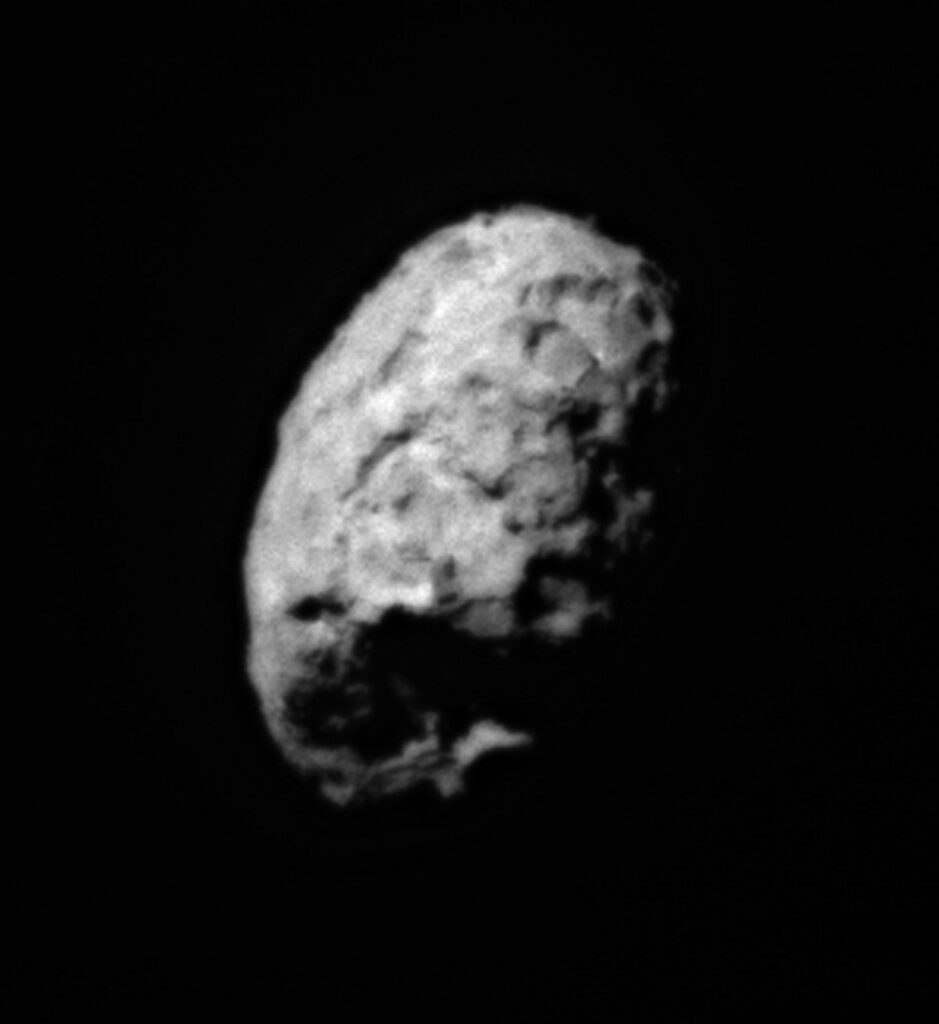2024-01-16 ワシントン大学セントルイス校

This image was taken during the close approach phase of Stardust’s Jan. 2, 2004, flyby of comet Wild 2. (Photo: NASA/JPL-Caltech)
◆この彗星は太陽系形成の出来事の証人であり、冷蔵庫のような宇宙環境で保存されていたため、熱や水による変化を免れていた。18年間の研究で得られた微細なサンプルは、太陽系初期の動的な時代の記録であり、今後も新しい技術を使って詳細な解析が期待される。
<関連情報>
- https://source.wustl.edu/2024/01/samples-from-a-wild-comet-reveal-a-surprising-past/
- https://www.sciencedirect.com/science/article/abs/pii/S0009281923000971?via%3Dihub
81P/ワイルド2彗星:太陽系の若き日の記録 Comet 81P/Wild 2: A record of the Solar System’s wild youth
Ryan C. Ogliore
Geochemistry Available online:28 November 2023
DOI:https://doi.org/10.1016/j.chemer.2023.126046
Abstract
NASA’s Stardust mission returned rocky material from the coma of comet 81P/Wild 2 (pronounced “Vilt 2”) to Earth for laboratory study on January 15, 2006. Comet Wild 2 contains volatile ices and likely accreted beyond the orbit of Neptune. It was expected that the Wild 2 samples would contain abundant primordial molecular cloud material—interstellar and circumstellar grains. Instead, the interstellar component of Wild 2 was found to be very minor, and nearly all of the returned particles formed in broad and diverse regions of the solar nebula. While some characteristics of the Wild 2 material are similar to primitive chondrites, its compositional diversity testifies to a very different origin and evolution history than asteroids. Comet Wild 2 does not exist on a continuum with known asteroids. Collisional debris from asteroids is mostly absent in Wild 2, and it likely accreted dust from the outer and inner Solar System (across the putative gap created by a forming Jupiter) before dispersal of the solar nebula. Comets are a diverse set of bodies, and Wild 2 may represent a type of comet that accreted a high fraction of dust processed in the young Solar System.



